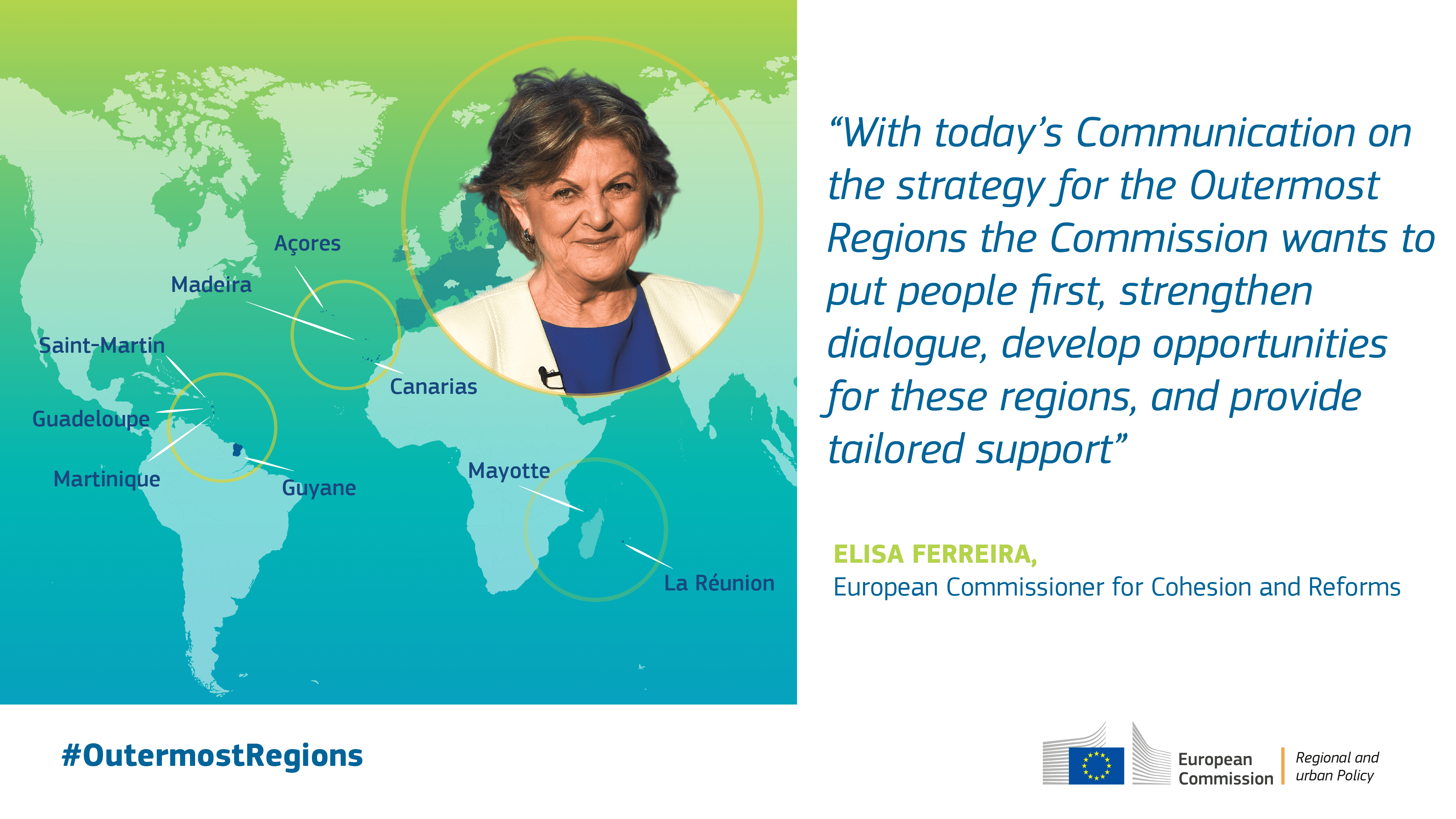


Five million of citizens call the EU their home, yet they are thousands of kilometres away from Europe. They live in the most remote parts of the Union, the outermost regions: Guadeloupe, French Guiana, Martinique, Mayotte, Réunion, and Saint-Martin (France); the Azores and Madeira (Portugal); and the Canary Islands (Spain). It is precisely for the people of these regions that the Commission adopted a new Communication on 3 May 2022, setting out a new strategic approach for the partnership between the outermost regions, their Member States and the Commission.
Titled ‘Putting people first, securing sustainable and inclusive growth, unlocking the potential of the EU’s outermost regions’, this Communication sets out new priorities and commitments towards the outermost regions, which benefit from a special status under EU law, namely under Article 349 of the Treaty on the Functioning of the European Union.
The renewed Communication for the outermost regions will focus on five pillars:
In practical terms, the Commission will put in place several dedicated calls for the outermost regions. Following the adoption of the new Communication, the Commission already started rolling it out, with its first action being a €1 million grant scheme, exclusively for young people in the outermost regions and financed by the European Regional and Development Fund. The project “Empowering Youth in the EU outermost regions” will provide young people with small grants so that they can shape and implement projects at local level that improve their communities’ life.
In the spirit of the European Year of Youth, this project reflects the Commission’s commitment to reach out to and engage young people in these most remote parts of the EU. At the same time, this represents an opportunity for young people in these regions to make their voice heard and contribute to the European project.
More tailored calls for the outermost regions are to follow, such as in blue economy financed by the European Maritime, Fisheries and Aquaculture Fund, research under Horizon Europe and innovation with support of the Interregional Innovation Investment Instrument.
Moreover, the Commission pledges to continue its effort for reflecting outermost regions’ specificities throughout EU policies and legislation including in some upcoming initiatives, such as the Single Market Emergency Instrument or future initiatives tackling the issue of brain drain.
Moreover, in the framework of extensive consultation activities and responding to calls of the European Parliament, the outermost regions and the public, the Commission will set up a new advisory support tool. This new instrument will help addressing administrative capacity issues in the outermost regions. The new tool will support outermost regions’ administrations to shape regional development plans, reforms and investment agendas and enable making best use of synergies between opportunities under EU funds and programmes.
At its very core, the new strategy aims to reduce inequalities and reduce the gap in social opportunity between the outermost regions and continental Europe. Building on the regions’ assets, it seeks to support the regions on their path to become greener, more digital and more competitive. In this regard, it makes a strong contribution to achieving the EU cohesion policy objectives.